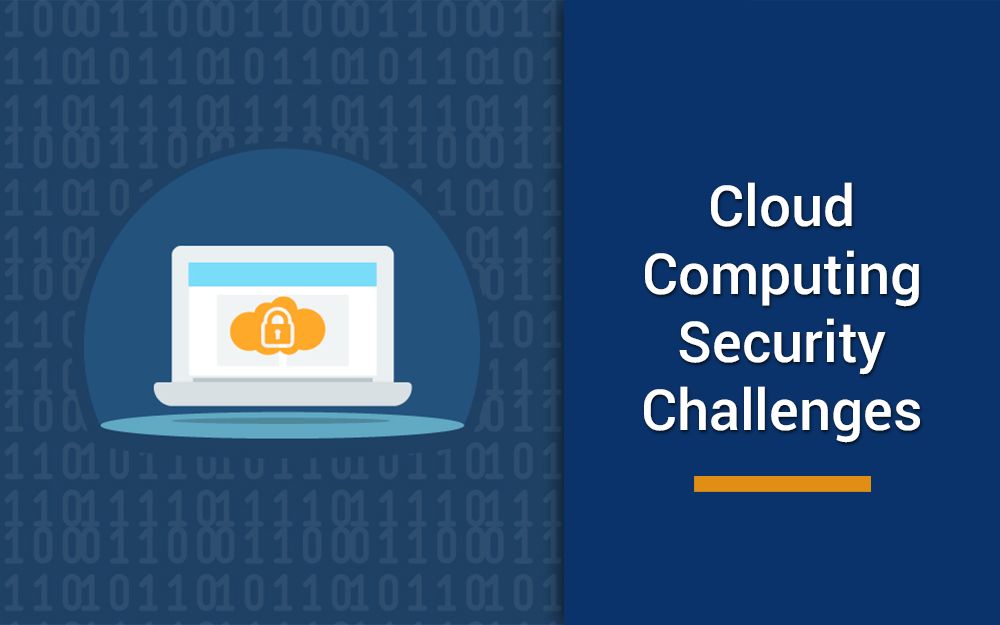Data security has long been a major challenge in the field of information technology (IT). In the cloud computing environment, data security becomes even more important as most of the organizational and individual data is placed in the cloud.
Though cloud providers include security in their services, but it is still not enough as the confidentiality of data is always at risk. There are many different types of cyberattacks, like man-in-the-middle attacks, password guessing attacks, phishing attacks, and more.
Below are some of the key data security challenges which are present in the cloud computing environment.
Also read: 15 types of cyberattacks you need to secure your business from
Top data security challenges

Challenge 1: Lack of visibility
According to a report by Dimension Research, 87% of respondents agree that a lack of cloud visibility obscures security threats to their organization.
This sounds like a major cloud security risk. In both, public and hybrid cloud environments, the loss of visibility and control can be a huge problem. Since you don’t get complete administration and management capabilities for the server hosting your data, the concern about data privacy increases. Data privacy means the personal information of a user must be kept confidential from other unauthorized users. With public cloud being used extensively now-a-days, data privacy concern is more out in the open.
Also read: Security is the most requested service that customers want from MSPs: Acronis-Omdia report
Challenge 2: Insecure APIs
Among all the data security challenges, insecure APIs make a significant threat to cloud adopters. This is as per a report by Gartner. It estimates that by 2022, APIs will be the most frequent attack vector, accounting for 90% of the attack surface.
Cloud service providers offer a wide range of Application Programming Interfaces (APIs) to their customers to manage and monitor the cloud service. If these APIs are broken or exposed, then it may lead to major data breaches. They can expose personal, financial, and other sensitive data for the public.
Therefore, it is important to recheck how you approach API security.
Challenge 3: Data Breaches
The risk of data breaches ranks as a top concern among cloud users. On an average, data breach incidents cost companies $2 million per breach, globally, as per the Cost of a Data Breach report. So, we can estimate how major is this risk, concerning cloud adoption.
Data breaches in cloud computing result from poor key management, weak passwords, and lax security authentication. Usually, developers leave encryption keys within the codes which hackers can access through various portals, leading to massive data loss. Companies that do not invest in advanced security solutions are more prone to cloud security risks.
Challenge 4: Regulatory Compliance Complexity
The lack of visibility and control creates compliance challenges in cloud computing. Especially in sectors like finance, banking and healthcare, where the data is highly sensitive, meeting full compliance while using public or hybrid cloud services can be difficult.
Generally, service providers implement their security and compliance controls based on their cloud platforms. Therefore, it is difficult to review their scope of compliance. Due to this complexity, many banking and healthcare organizations shy away from embracing the cloud.
Cybersecurity in healthcare is a major issue. Read tips to overcome healthcare IT challenges.
Challenge 5: Cyber attacks
The security provided by the cloud service providers is a significant concern for organizations. Companies worry that cyber attackers would easily penetrate the cloud than legacy systems. One severe cyber attack has the power to cause huge data loss and damage the reputation and integrity of an organization.
There are a number of cybersecurity threats that can affect a company’s cloud computing services. Some of these are:
- Cloud malware injection attack: This comes on top in the cloud security risks’ list. Here, the main aim is to inject malware into the cloud infrastructure to get the user’s information access in the cloud.
- Distributed Denial of Service (DDoS): This floods your system with heavy traffic that your servers are not capable to cope with. Such attacks can shut your system and make it unavailable to your staff, users, and customers.
- Man-in-the-middle: This is when an unauthorized user/hacker manages to position in between the conversation of two or more parties. If the hacker succeeds, he can alter the data.
Also read: Top 10 cybersecurity incidents in 2020
Final thoughts
The adoption of cloud technology is beneficial for organizations from all sectors. Cloud infrastructure allows organizations to be agile, improve work processes, reduce costs, and modernize overall operations, giving them a competitive edge.
But, how to avoid cloud computing risks and challenges?
- The most important thing is to choose your cloud service provider wisely. Always go for a trusted and reliable managed cloud service provider who has all the security solutions in place.
- Organizations also need to take responsibility for protecting their own data by developing the necessary cyber risk management framework that can provide the required defenses. There are comprehensive cyber protection solutions that can protect your business with end-to-end security.
How do you deal with cloud security risks? Let us know in the comments section.
Photo Credit: Computer Security – Protect Data – Computers by Blue Coat Photos on flickr.com
Also read: Ransomware and Viruses: Top differences you should know



Thank you for sharing your blog, seems to be useful information can’t wait to dig deep!